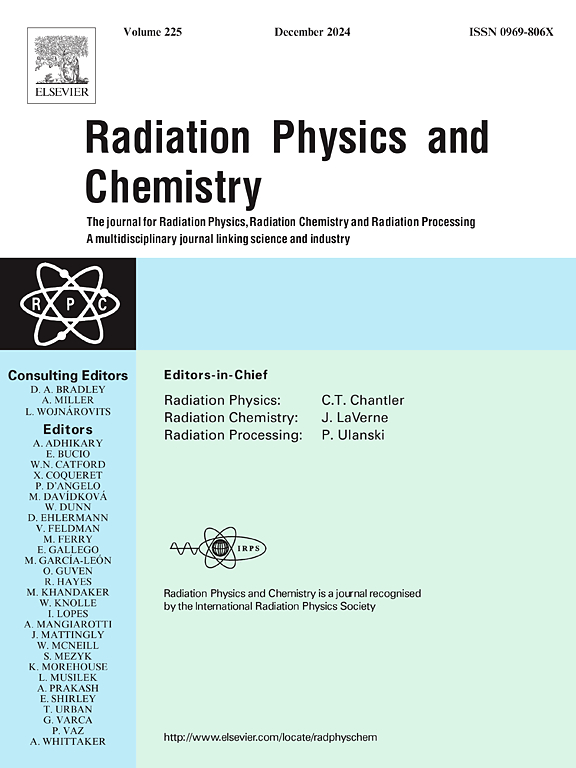Radiolytic behavior and effect in nuclear reactor coolants: A focus on ammonia and hydrazine
IF 2.8
3区 物理与天体物理
Q3 CHEMISTRY, PHYSICAL
引用次数: 0
Abstract
Coolant selection is intricately linked to the design and type of the nuclear reactor. To mitigate the corrosion of structural materials, the water chemistry of the primary circuit must be carefully managed. Usually, substances such as hydrogen, ammonia, and hydrazine are employed in the reactor's primary coolant. Among these additives, ammonia and hydrazine, which are nitrogen-containing additives, undergo a series of radiolysis reactions in the reactor, and the oxidation environment of the system is altered. In this review, published studies on the radiolytic behavior of ammonia and hydrazine were summarized and analyzed. For ammonia coolants, the ·OH radicals produced by water radiolysis react rapidly with NH3. The radiolysis product of ammonia, ·NH2 reacted with oxidizing species such as H2O2, ·OH, and O2. Under aerobic conditions, the radiolysis of ammonia solutions primarily led to the production of NOx−. For hydrazine coolants, NH3, H2, and N2 were formed by thermal decomposition and radiolysis. N2H4 directly inhibited the formation of H2O2 and nitrogen oxides due to its strong reducibility and ability to remove O2, ·OH, and H2O2. As the irradiation continued, NH3 was consumed and its concentration decreased, the pH of coolant tended to decrease with further increases in absorbed dose.
求助全文
约1分钟内获得全文
求助全文
来源期刊

Radiation Physics and Chemistry
化学-核科学技术
CiteScore
5.60
自引率
17.20%
发文量
574
审稿时长
12 weeks
期刊介绍:
Radiation Physics and Chemistry is a multidisciplinary journal that provides a medium for publication of substantial and original papers, reviews, and short communications which focus on research and developments involving ionizing radiation in radiation physics, radiation chemistry and radiation processing.
The journal aims to publish papers with significance to an international audience, containing substantial novelty and scientific impact. The Editors reserve the rights to reject, with or without external review, papers that do not meet these criteria. This could include papers that are very similar to previous publications, only with changed target substrates, employed materials, analyzed sites and experimental methods, report results without presenting new insights and/or hypothesis testing, or do not focus on the radiation effects.
 求助内容:
求助内容: 应助结果提醒方式:
应助结果提醒方式:


